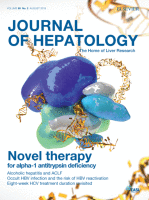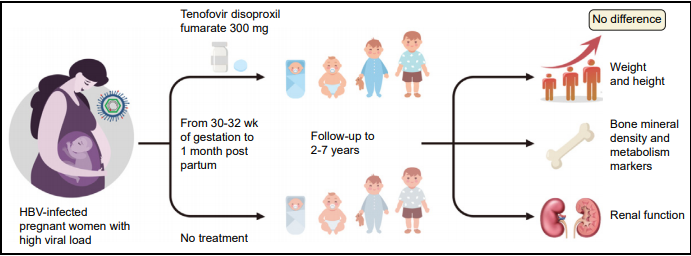Featured Scientist

Author published in"Journal of Hepatology"affiliate to
Wan-Hsin Wen
School of Medicine,
Fu-Jen Catholic University, New Taipei City, Taiwan
Article published in
"Journal of Hepatology"2020 Jun;72(6):1082-1087
Long-term growth and bone development in children of HBV-infected mothers with and without fetal exposure to tenofovir disoproxil fumarate
Background & Aims:
Tenofovir disoproxil fumarate (TDF) is the preferred treatment to prevent maternal transmission of HBV, owing to its efficacy and safety. However, data are lacking on the long-term safety outcomes in children following fetal exposure to TDF.
Methods:
Children participating in a prospective, multisite trial of maternal TDF treatment during late pregnancy were recruited for follow-up visits once a year. Growth parameters, serum biochemistry, HBV serology, and bone mineral density (BMD) by dual-energy x-ray absorptiometery scan were measured. Results: One hundred and twenty-eight children, 71 in the TDF and 57 in the control group, completed 255 follow-up visits at the age of 2 to 7 (median, 4.08) years. No differences in z-scores for weight-for-age (0.26 ± 0.90 vs. 0.22 ± 0.99, p = 0.481), z-scores for height-for-age (0.20 ± 1.02 vs. 0.25 ± 0.98, p = 0.812), and estimated glomerular filtration rate (169.12 ± 50.48 vs. 169.06 ± 34.46 ml/min/1.73m2 , p = 0.479) were detected. After adjustment for age, sex and HBV status by multiple linear regression, children in the TDF and control group had comparable levels of serum calcium, phosphorus, bone-specific alkaline phosphatase, calcidiol and BMD of lumbar spines (0.55 ± 0.01 vs. 0.57 ± 0.01 g/cm2 , p = 0.159) and left hip (0.56 ± 0.01 vs. 0.56 ± 0.01 g/cm2 , p = 0.926).
Conclusions:
Children of HBV-infected mothers who did or did not receive tenofovir disoproxil fumarate treatment during late pregnancy had comparable long-term growth, renal function, and bone development up to 6–7 years after delivery.

Keywords: Bone mineral density; Mother-to-infant transmission; Maternal transmission; Vertical transmission; Perinatal transmission; Antiviral therapy; Pregnancy
48 views